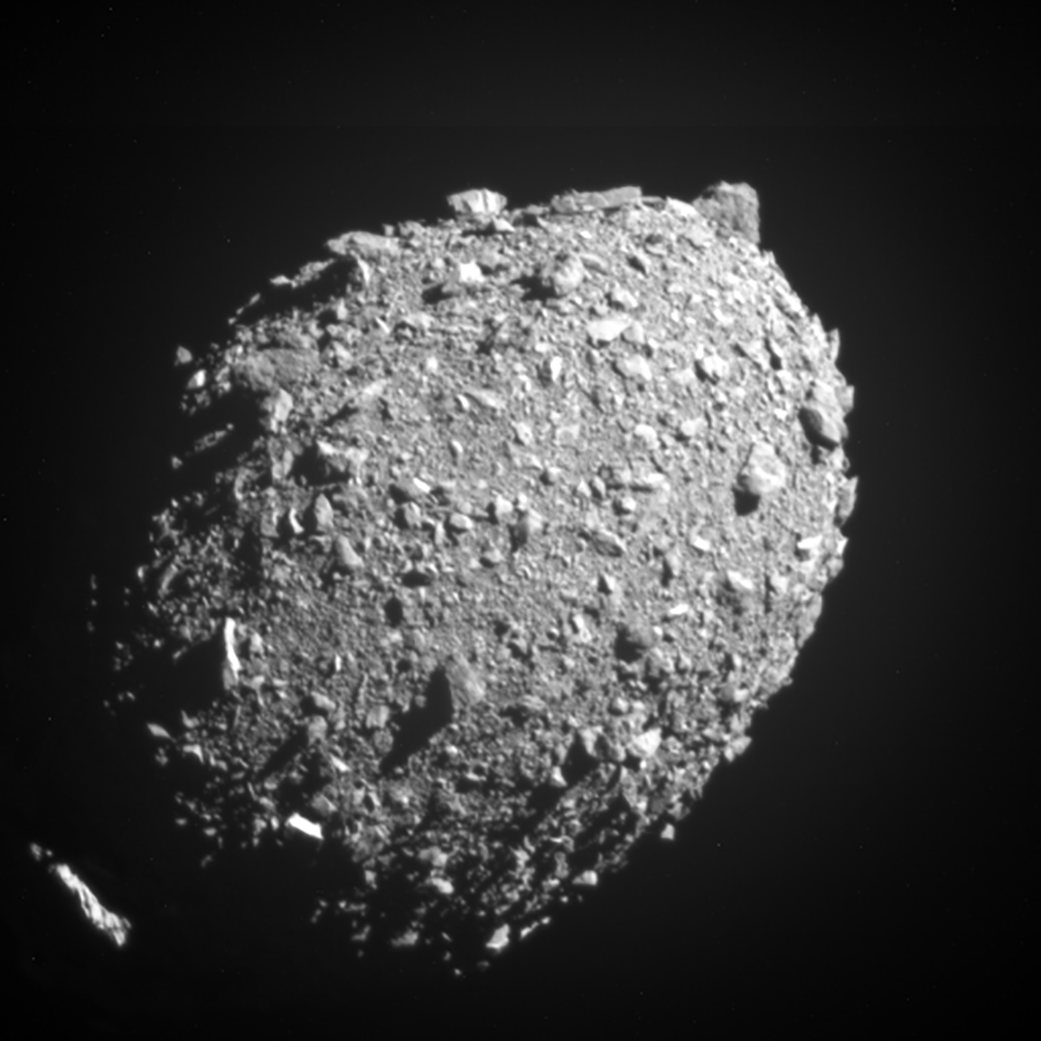The impact of the DART mission excavated more than five million kilos of material from the asteroid Dimorphos
The Institute of Astrophysics of Andalusia (IAA-CSIC) is participating in the study of the material ejected by the impact, which altered the asteroid's orbit around its companion Didymos and produced a crater. The slower material was pushed in an anti-solar direction (almost opposite to the impact) by solar radiation pressure to form a tail, and the faster material showed complex interactions with the asteroid pair
On 27 September 2022, the DART mission (NASA) collided with its target, the asteroid Dimorphos, and changed its orbit. It was the first planetary defence test mission designed to change the course of an asteroid, and its success was followed by intensive analysis of the collision, including the study of the tonnes of rock that were displaced and launched into space. The results of this analysis are published today in four papers in Nature, one of which has a prominent participation of the Institute of Astrophysics of Andalusia (IAA-CSIC).
The DART (Double Asteroid Redirect Test) mission sought to demonstrate the usefulness of the kinetic impact method for deflecting potentially hazardous asteroids without using explosive charges. Its target, located eleven million kilometres from Earth, was the Dimorphos satellite, about 160 metres in diameter, which orbits the asteroid Didymos (780 metres in diameter), forming a binary system. The impact of the spacecraft, travelling at about six kilometres per second, deflected the orbit of Dimorphos and shortened its translation period relative to Didymos by more than half an hour, which was a success for the project.
“However, many other aspects remained to be studied, in particular the characterisation of the material ejected after the collision," says Fernando Moreno, a researcher at the IAA-CSIC who is participating in the study. “Thus, from the moment of impact until several months later, the Hubble Space Telescope (HST) has been taking images of this material and characterising its evolution. Although part of the material consists of particles ejected at high velocity, at several hundred metres per second, and which quickly disappears from the field of view of the cameras, we have been able to observe the low velocity component”.

This work presents a fundamentally morphological study of the evolution of this material, which has made it possible to determine the complex interaction between the asteroid system and the dust under the action of the radiation pressure produced by sunlight.
"This radiation pressure pushes micrometre-sized particles away to distances of several thousand kilometres in a couple of days, while the larger particles, ejected at speeds close to the escape velocity of the system (about forty centimetres per second) show spiral motions around the system and a complicated evolution over the course of days. We see, for example, the appearance of a double tail, which could be related to the re-impact of a portion of the largest emitted particles (boulders) on the surface of Didymos, or to the disintegration of these same boulders due to a high rotation speed or the effect of mutual collisions", says Fernando Moreno (IAA-CSIC).
Asteroid activation is a naturally occurring phenomenon in the Solar System that causes the object to become brighter and a dust tail similar to that of comets to unfold. The DART experiment will help characterise naturally active asteroids in which collisions with other asteroids act as a triggering mechanism. The impact, on the other hand, will have generated a crater on the surface of Dimorphos, whose properties, as well as the evolution of the system's dynamics, will be studied by the European Space Agency's (ESA) Hera mission, which will be launched in 2024 and will begin studying the system in 2026.
Dart mission observations will produce more results shortly. “We will characterize the material ejected with the application of dynamic codes of Monte Carlo, which allow to study the dynamic evolution of the particles and build synthetic images, which in turn reveal the properties of dust: distribution of sizes, speeds and total mass ejected. This is very important for the determination of the so-called beta factor on the efficiency of the transmission of the linear moment CSIC).
The DART mission's observations will soon produce further results. "We will characterise the ejected material with the application of Monte Carlo dynamical codes, which allow us to study the dynamical evolution of the particles and to construct synthetic images, which in turn reveal the properties of the dust: size distribution, velocities and total ejected mass. This is very important for the determination of the so-called beta factor on the efficiency of the transmission of linear momentum in the collision, apart from the knowledge it conveys about the natural collision processes in the asteroid belt", concludes Fernando Moreno (IAA-CSIC).
Li et al. "Ejecta from the DART-produced active asteroid Dimorphos". Nature, March 2023.
Instituto de Astrofísica de Andalucía (IAA-CSIC)
Unidad de Divulgación y Comunicación
Silbia López de Lacalle - sll[arroba]iaa.es - 958230676
https://www.iaa.csic.es
https://divulgacion.iaa.csic.es

